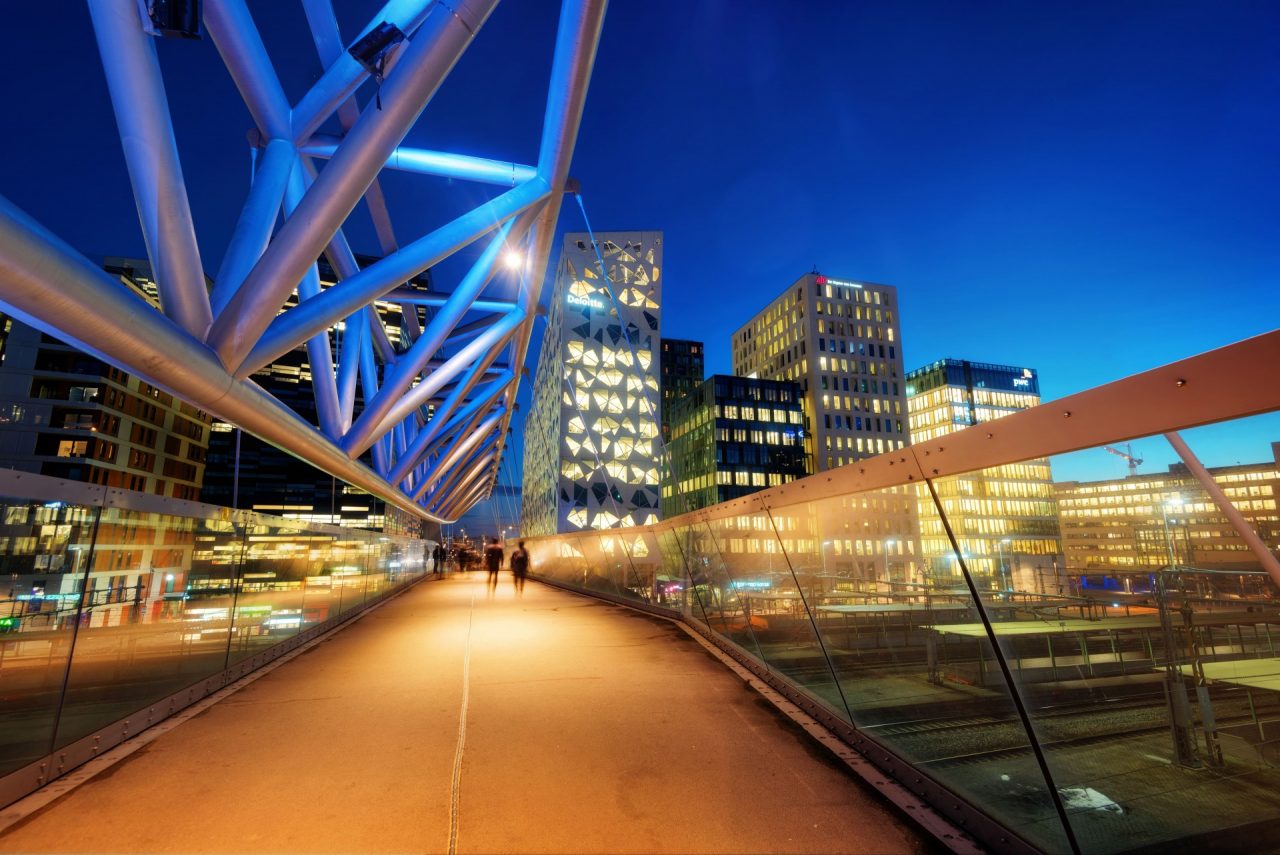Oslo is a European metropolis inspired by sustainability. Shimmering glass skyscrapers coexist with verdant green parks. In the historic center, locals get around by foot or by bicycle. Subway lines reach all corners of the city, covering the population’s transport needs.
But this was just the beginning for Norway’s capital city. With sustainability as its main motivator, the city jumped headfirst into a new challenge: inaugurating the world’s first carbon-neutral construction site.
The construction site is located at Olav Vs gate, one of Oslo’s busiest intersections. In the coming months, it will be transformed into a pedestrian-only area. Local administration made a promise to residents before the site was inaugurated in September 2019 that it would be completely “green.”
It’s followed through on this: every piece of machinery, from cranes to excavators to hoists, is electrically powered, effectively eliminating pollution and noise.
The construction site is a pilot project that the Norwegian government would like to apply across all the country’s large-scale construction sites. The hope is to bring about a new way of building major works.
The impact of the sustainable construction sites
Oslo is a global example of best practices in environmental protection, including in the construction sector. The industry currently produces only 7% of the city’s total harmful emissions. The carbon-neutral construction site contributes significantly to this overall picture. In the coming months, it could become a test case for other major city projects.
The use of electric machinery on the Olav Vs site has eliminated some 35,000 litres (9,246 gallons) of diesel, equivalent to 92,500 kg (191 tons) of CO2.
“We observed shops keeping their doors open towards the street, even when construction work was going on just outside on the pavement,” said Philip Mortensen, a senior adviser at the City of Oslo’s Climate Agency, in an interview with the BBC. “The workers also reported much better communication on site due to lower noise levels, and that as a consequence the working environment felt safer.”
Based on the strength of the pilot project’s results, the Oslo administration has set two targets for city construction. First, all municipal construction sites must be zero-emission by 2025; second, by 2030 the same should hold true for all sites, including private ones.

Norwegian leadership in “green” worksites
In its search for industrial solutions to minimise harmful impacts on the environment, Oslo is not alone. Six additional cities in Norway have announced their intent to reach the same goals at their urban construction sites. By 2030, the hope is to reach zero emissions in all construction sites, whether public or private. The goal is feasible in part due to Norway’s natural inclination towards energy sustainability. Currently the country holds a world record, meeting 98% of its energy needs through renewables, particularly hydroelectric power.
This figure, the result of sustainable policies first implemented decades ago, is a further boost to the decarbonisation of the construction sector. Once again, the city of Oslo has set an important example in this realm. Since 2019, all contracts involving the construction of roads, schools, water systems, and wastewater management facilities have been drawn up primarily based on compliance with environmental criteria and the use of zero-emission machinery.
Requiring this from construction companies has helped push investment and innovation, and has fostered a shared commitment to sustainability.
The global move toward sustainability
Decarbonising the construction industry is one of the surest ways to significantly reduce air pollution.
Currently, the sector of constructions is responsible for 10% of global greenhouse gas emissions. In terms of Co2, if considered also the use of infrastructures, its impact is even more significant: construction contributes to 38% of global carbon dioxide emissions.
Other Northern European capitals join Oslo at the forefront of this shared battle. Copenhagen (where Webuild Group built Cityringen, the metro line running around the city center) and Helsinki have also inaugurated some zero-emission construction sites.
For their part, large construction companies are answering the call of these committed cities and towns. Between 2014 and 2020, Webuild Group’s operations have recorded a 56% reduction in Co2 emissions. Just like in Oslo, the idea is to create sustainable construction sites, using hybrid vehicles and renewable sources to power work.
Even the TBMs, the over 100 meter-long (or 328 feet) moles that dig the tunnels of railway and metro lines, are now being analysed and studied to deliver a 20% reduction in energy and water consumption. Over the next few years, the Webuild Group’s construction sites around the world will ensure the daily treatment of 857 million cubic meters of water, the installation of 14,400 MW of renewable energy, and an average reduction of 55% in travel time on new high-speed railway lines. Additionally, they will help cut an annual 21 million tons of CO2 that would otherwise be emitted into the atmosphere.
All this will help the move toward making the United Nations’ Sustainable Development Goals a reality, transforming the construction industry into a truly sustainable one.

